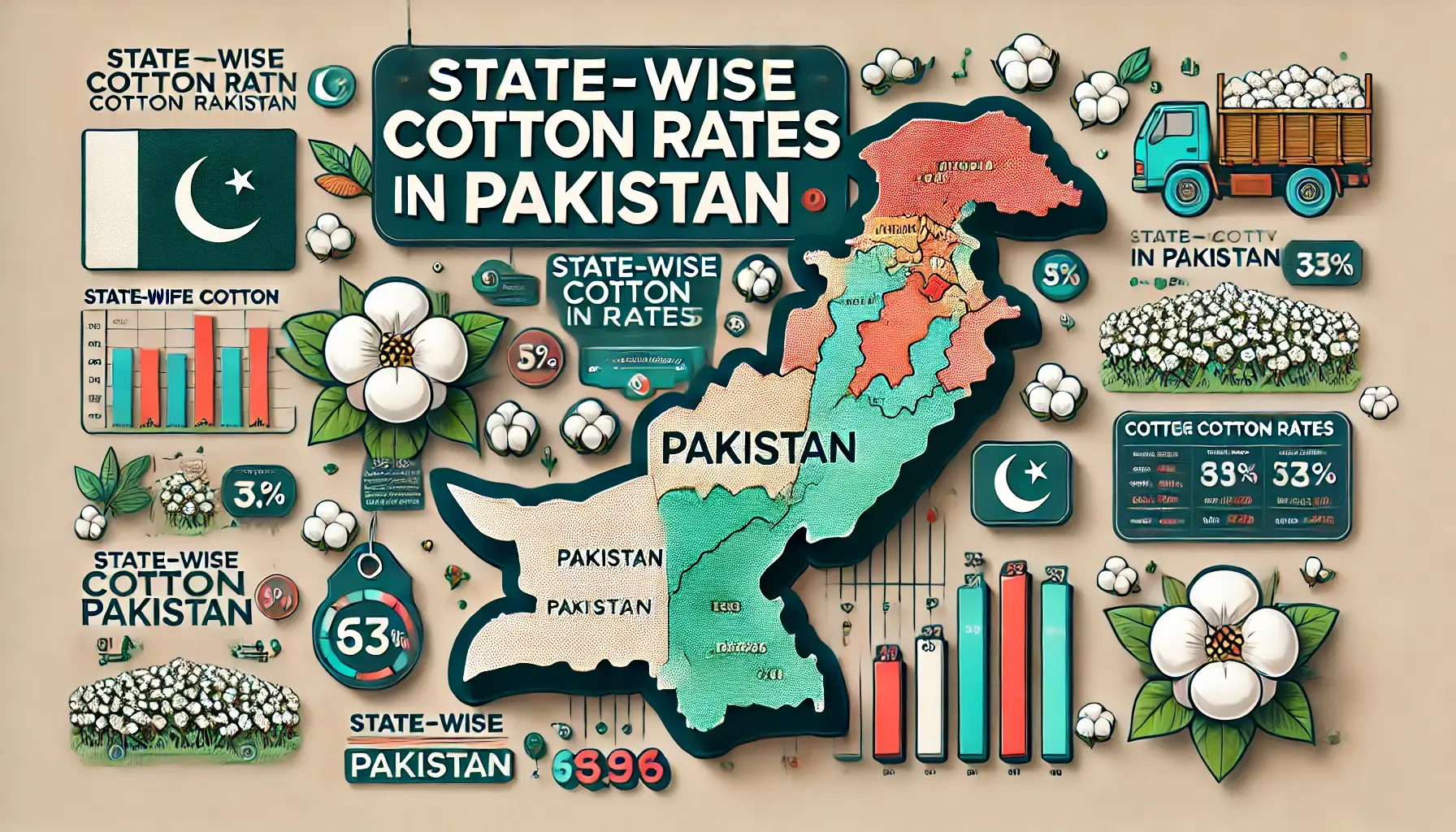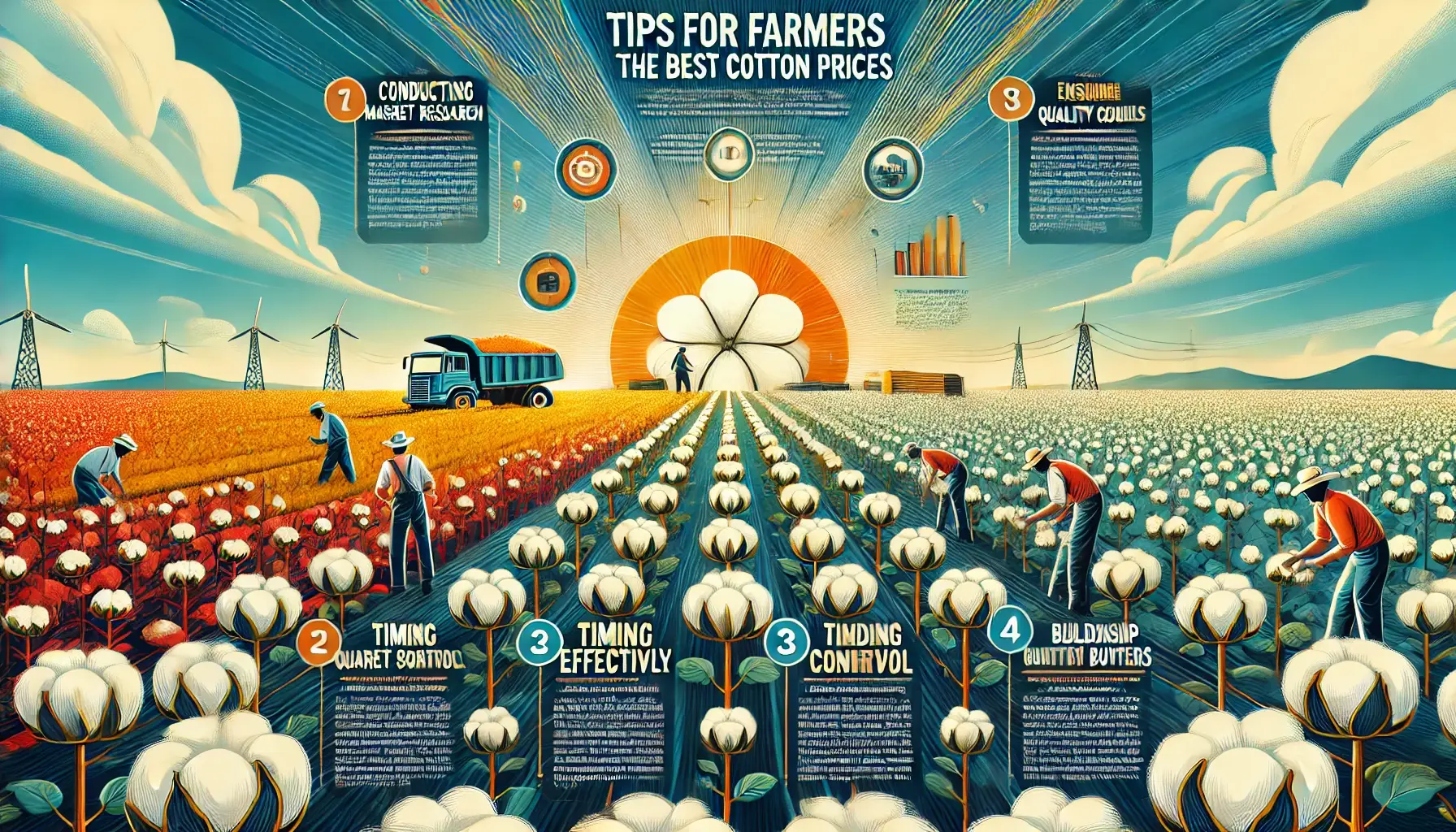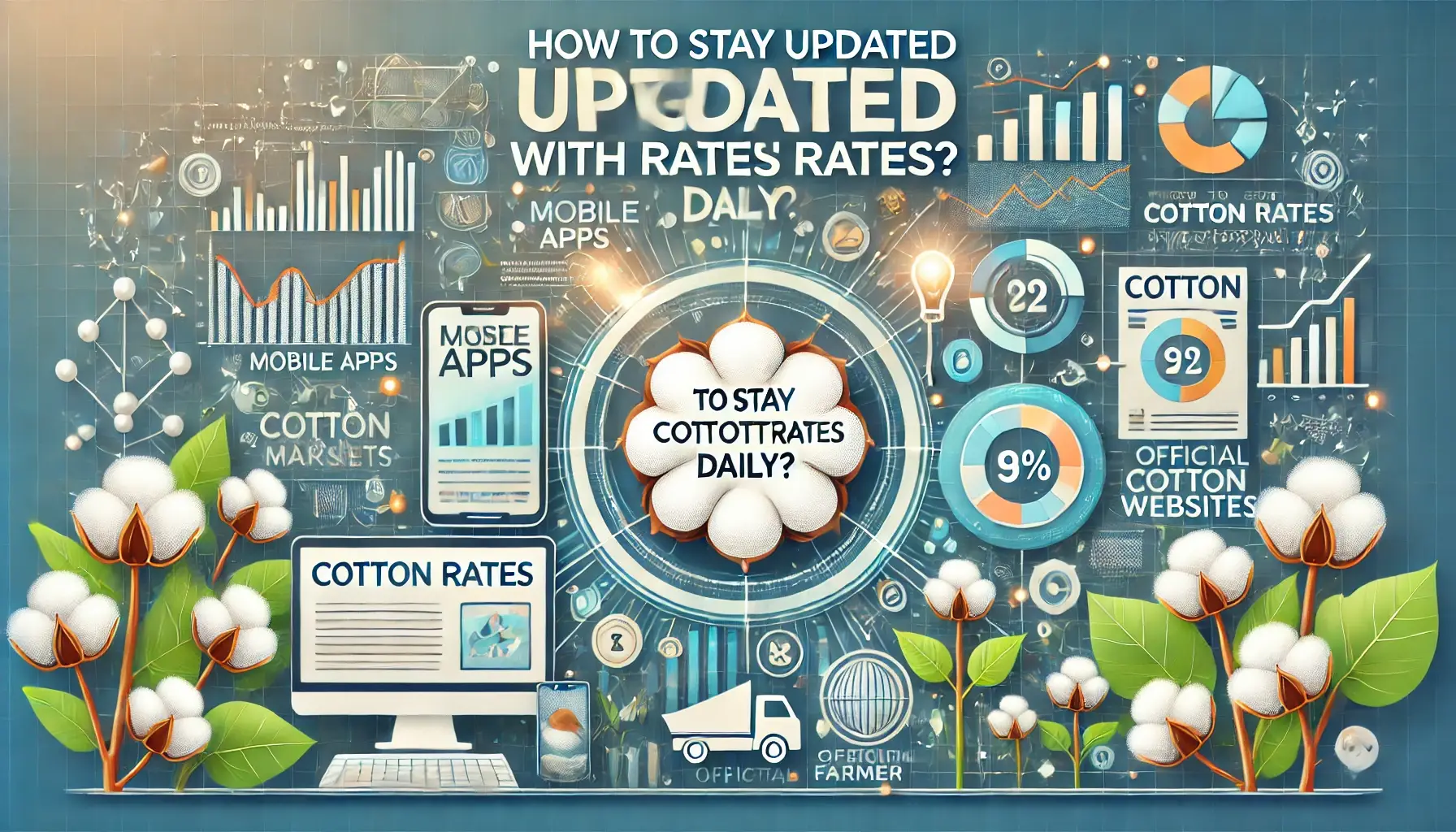Cotton plays a vital role in Pakistan’s agriculture and textile industries, serving as a cornerstone for the country’s economy. As one of the largest cotton producers globally, Pakistan’s market is highly sensitive to fluctuations in cotton rates. These prices, often referred to as Cotton Prices in Pakistan, can vary due to shifts in domestic demand, international trade policies, and global market trends. Understanding the current cotton rate helps businesses and farmers navigate this dynamic landscape effectively.
Staying updated on cotton prices is essential for navigating Pakistan’s ever-changing market landscape.
Visual Pakistan
Table of Contents
ToggleLatest Cotton Rate Today in Pakistan
The current cotton rate in Pakistan for October 16, 2024, varies significantly depending on the region. In cities like Hyderabad, the cotton price ranges between PKR 5,010 and PKR 8,020, while in Salehput, it is priced between PKR 8,510 and PKR 8,710.
Other areas, such as Umarkot, report prices from PKR 4,910 to PKR 6,410, reflecting regional variations influenced by factors like demand and weather conditions. Data for these rates are collected from market reports and local commodity exchanges.
State-Wise Cotton Rates in Pakistan

Punjab Cotton Rates
This province is a significant cotton-producing region, contributing a large percentage of Pakistan’s cotton yield. The current market trends indicate stable prices, although fluctuations occur due to various factors including weather conditions and market demand.
| City | Minimum Price (PKR) | Maximum Price (PKR) | Average Price (PKR) |
| Multan | 7,800 | 8,000 | 7,900 |
| Faisalabad | 7,700 | 8,200 | 7,950 |
| Lahore | 17,700 | 18,000 | 17,850 |
| Sargodha | 7,600 | 8,100 | 7,850 |
| Bahawalpur | 7,500 | 8,000 | 7,750 |
Sindh Cotton Rates
Sindh faces challenges such as pest issues and variable weather conditions during the harvesting season, which impact cotton prices and production levels. The market demand remains a crucial factor influencing current rates.
| City | Minimum Price (PKR) | Maximum Price (PKR) | Average Price (PKR) |
| Karachi | 7,100 | 8,700 | 7,900 |
| Hyderabad | 7,200 | 8,600 | 7,900 |
| Sukkur | 7,500 | 8,700 | 8,100 |
| Mirpurkhas | 7,300 | 8,500 | 7,900 |
| Thatta | 7,400 | 8,300 | 7,850 |
Balochistan Cotton Rates
The cotton rates here reflect the challenges of producing in arid climates. The average prices in cities like Quetta and Sibi indicate higher rates, likely due to lower production volumes.
| City | Minimum Price (PKR) | Maximum Price (PKR) | Average Price (PKR) |
| Quetta | 8,500 | 9,800 | 9,150 |
| Sibi | 8,900 | 9,700 | 9,300 |
| Kalat | 8,600 | 9,200 | 8,900 |
| Khuzdar | 8,700 | 9,000 | 8,850 |
| Ziarat | 8,800 | 9,500 | 9,150 |
Khyber Pakhtunkhwa Cotton Rates
While Khyber Pakhtunkhwa is not a major cotton-producing province, it contributes to the national supply. Current specific rates are not available, but trends are expected to align with the national market.
Comparison of Cotton Prices Across Provinces
Here’s a comparative table displaying the average cotton prices per kg in different provinces of Pakistan as of October 2024. This table aims to provide a clearer overview of the pricing variations based on regions:
| Province | Average Price per 40 kg (PKR) |
|---|---|
| Punjab | 7,900 |
| Sindh | 7,900 |
| Balochistan | 9,150 |
| Khyber Pakhtunkhwa | 9,600 |
Factors Influencing Cotton Prices in Pakistan
Weather Conditions
Weather plays a crucial role in cotton production in Pakistan. Seasonal changes, such as rainfall and drought, significantly impact the yield and quality of cotton.
Excessive rainfall can lead to waterlogging, while insufficient rainfall can stress crops, reducing their growth and yield. According to the Pakistan Meteorological Department, fluctuations in weather patterns, including unexpected droughts or monsoon delays, can severely affect cotton farmers’ productivity, ultimately influencing market prices.
For instance, the 2022 floods in Sindh devastated many cotton fields, resulting in a sharp decline in production.
International Market Trends
Global demand for cotton is another critical factor affecting local prices. Major importing countries, particularly China and the United States, significantly influence the market. When these countries increase their cotton imports, prices in Pakistan often rise due to heightened demand.
Conversely, a decrease in demand can lead to lower prices locally. Reports from the United States Department of Agriculture (USDA) indicate that trade relationships and global economic conditions can shift demand patterns, directly impacting Pakistan’s cotton market .
As international competition increases, local producers must remain adaptable to maintain market stability.
Government Policies
Government policies play a crucial role in shaping cotton prices. Subsidies, tariffs, and other incentives can either stabilize or destabilize the market. The Pakistani government has historically provided subsidies to cotton farmers to encourage production and support their income.
However, the effectiveness of these policies varies, and changes in tariffs on imported cotton can significantly affect local prices. For instance, protective tariffs can shield local farmers from foreign competition, while reduced tariffs may lower prices by allowing cheaper imports to flood the market.
Ongoing initiatives aimed at modernizing agriculture could further influence pricing trends and the overall cotton supply chain.
Currency Fluctuations
Currency fluctuations significantly impact cotton pricing in Pakistan. The value of the Pakistani Rupee (PKR) directly affects the competitiveness of local cotton in international markets. A depreciated PKR makes Pakistani cotton cheaper for foreign buyers, potentially boosting exports.
However, if the PKR strengthens, local cotton may become more expensive for international buyers, leading to decreased demand. According to the State Bank of Pakistan, these currency changes create uncertainty for farmers and traders, making it essential to monitor exchange rates closely to anticipate market shifts .
Understanding these dynamics can help stakeholders navigate the complexities of the cotton market more effectively.
Awareness of the key factors influencing cotton prices can enhance decision-making for stakeholders in Pakistan’s cotton market.
Visual Pakistan
Tips for Farmers to Get the Best Cotton Prices

Farmers can optimize their profits from cotton production by following certain strategies related to market timing, storage techniques, and collaboration with traders. Here are some effective tips:
| Tip | Details | Benefits |
| Market Timing | Sell during peak harvest season and when demand is high. Monitor market trends for optimal timing. | Maximizes profits by selling at higher prices. |
| Storage Techniques | Store cotton in dry, ventilated areas. Use airtight containers and implement pest control. | Maintains quality and value of cotton for better pricing. |
| Partnering with Local Traders | Collaborate with local traders or join cotton cooperatives for better deals and insights. | Enhances bargaining power and access to market information. |
Impact of Cotton Prices on Pakistan’s Textile Industry
Cotton prices significantly influence Pakistan’s textile industry, which plays a vital role in the country’s economy. When cotton prices rise, production costs increase, making it harder for manufacturers to compete in the global market. This is especially challenging when sudden price hikes occur due to adverse weather or supply chain disruptions.
Cotton is crucial for maintaining Pakistan’s status as a leading textile exporter, as it accounts for around 60% of total exports. Ensuring stable cotton production is essential for keeping prices competitive and sustaining the industry’s growth.
Cotton’s Role in Pakistan’s Textile Dominance
Cotton underpins Pakistan’s textile dominance, highlighting the need for effective agricultural practices to stabilize supply. By addressing these challenges, Pakistan can continue to strengthen its position in international markets.
Cotton Rate Trends Over the Last Year
In the past year, cotton prices in Pakistan have gone through significant ups and downs. At the start of the year, prices were stable, but they rose sharply in the first few months due to bad weather, including heavy rains and floods, which hurt cotton crops. For instance, by April 2024, prices hit a peak because there was not enough supply to meet the demand.
Throughout the year, international market trends also played a big role in price changes. Demand from major buyers like China and India influenced local prices, and government actions like export bans and tariffs on other countries affected the market too. As the harvest season began in mid-year, cotton prices started to drop because more cotton was available. However, ongoing issues like a weak currency and increasing production costs kept prices unstable.
Overall, the past year showed how weather conditions, government policies, and international demand worked together to impact cotton prices in Pakistan.
Cotton Rate Forecast for the Coming Months
Experts believe that cotton prices in Pakistan may go up in the next few months due to strong demand from countries like China and India. These countries are likely to buy more cotton to meet their needs, especially as they prepare for their own harvests in early 2025. This increased demand could push prices higher.
However, there are risks to this forecast. Weather problems, such as unexpected droughts or heavy rains, could hurt cotton crops and affect supply. Additionally, changes in the value of the Pakistani rupee compared to the US dollar might influence how much farmers can earn from their exports. Government decisions, like subsidies or trade restrictions, could also impact prices.
In summary, while the future looks hopeful for cotton prices, everyone involved in the cotton market should watch for potential problems. For more updates, check out DAP Fertilizer Prices in Pakistan.
Top 5 Factors That Will Affect Cotton Prices in 2024
| Factor | Description | Sources |
|---|---|---|
| Global Supply Chain Disruptions | Rising logistics and shipping costs may lead to higher prices for cotton. | International Cotton Advisory Committee (ICAC) |
| Climate Change | Extreme weather patterns could reduce cotton yields, impacting overall production. | Food and Agriculture Organization (FAO) |
| International Trade Agreements | Changes in trade agreements could alter the demand for Pakistani cotton, affecting export opportunities. | World Trade Organization (WTO) |
| Currency Depreciation | A weaker PKR may lower export prices but increase input costs, affecting farmers’ profitability. | State Bank of Pakistan |
| Technological Advancements | New farming technologies can enhance yields and lower production costs, benefiting cotton farmers. | Agricultural Innovation Program |
1. Global Supply Chain Disruptions
Ongoing disruptions in global supply chains can significantly impact cotton prices. Issues such as shipping delays, rising logistics costs, and labor shortages can lead to increased expenses for cotton producers. According to a report from the International Cotton Advisory Committee (ICAC), disruptions in transportation networks may continue to affect pricing stability throughout 2024.
2. Climate Change
The effects of climate change are becoming increasingly unpredictable, causing extreme weather events that can affect cotton yields. Changes in rainfall patterns, increased temperatures, and drought conditions can lead to reduced crop production. A study from the Food and Agriculture Organization (FAO) highlights the need for adaptive strategies to mitigate these impacts on cotton farming.
3. International Trade Agreements
Changes in international trade agreements can influence the demand for Pakistani cotton. New trade deals or sanctions may open up markets or restrict access, impacting export opportunities. Research from the World Trade Organization (WTO) suggests that favorable trade agreements can enhance demand, while trade barriers could have the opposite effect.
4. Currency Depreciation
The weakening of the Pakistani rupee (PKR) against major currencies can affect the competitiveness of cotton exports. A depreciating currency makes exports cheaper for foreign buyers, potentially increasing demand.
However, it also raises the cost of imported farming inputs, which can squeeze profit margins for local farmers. Economic analyses from State Bank of Pakistan provide insights into how currency fluctuations could impact agricultural exports.
5. Technological Advancements
Innovations in farming technology can significantly enhance cotton production. New techniques and tools, such as precision agriculture and genetically modified seeds, can lead to higher yields and lower production costs. The Agricultural Innovation Program has reported on various advancements that could help farmers adapt to changing conditions and improve their output.
To learn more, explore our article on the Wheat Price in Pakistan
How to Stay Updated with Cotton Rates Daily?

Keeping track of daily cotton prices is essential for farmers, traders, and anyone involved in the cotton industry. Here are some reliable sources to ensure you stay informed about the latest rates:
Commodity Exchanges
Pakistan Mercantile Exchange (PMEX): As a leading commodity exchange in Pakistan, PMEX provides real-time updates on cotton prices along with other commodities. By visiting the PMEX website, you can access daily trading reports, price charts, and market insights that are crucial for decision-making.
Mobile Apps
Several mobile applications cater specifically to cotton market tracking. Apps such as Cotton Price Tracker and Agri App offer user-friendly interfaces, enabling users to receive instant notifications for price changes, news, and analysis. This mobile accessibility ensures that you’re always in the loop, no matter where you are.
Government Reports
Ministry of National Food Security & Research: This government body regularly publishes detailed reports and statistics on agricultural commodities, including cotton. Their website features updates on production, pricing trends, and policy changes that could affect the market. For the latest information, visit the Ministry of National Food Security.
News Websites and Agricultural Journals
Reputable news outlets like Dawn, The Express Tribune, and Business Recorder frequently report on cotton prices, offering analysis and insights into market trends. By following these sources, you can gain a comprehensive understanding of the factors influencing cotton rates.
Social Media and Forums
Engaging with agricultural communities on social media platforms can provide real-time updates and discussions about cotton prices. Joining groups on Facebook or following Twitter accounts dedicated to agriculture can help you connect with other farmers and traders, sharing insights and experiences.
For comprehensive information, check out our article on the Current Rice Price in Pakistan
Frequently Asked Questions (FAQ)
here are the some following asked question:
What is the current cotton price per kg in Pakistan?
The current cotton price per kg in Pakistan varies by region
How is kapas different from processed cotton?
Kapas refers to raw cotton in its natural state, while processed cotton is the cleaned and ginned product ready for spinning into yarn or other uses.
What are the factors influencing cotton prices today?
Factors influencing cotton prices include weather conditions, international market demand, government policies, and currency fluctuations.
Where can I check daily updates on cotton prices in Pakistan?
Daily updates on cotton prices can be checked through the PMEX website, mobile apps like Cotton Rate Tracker, and reports from the Ministry of National Food Security & Research.
Conclusion
The cotton market in Pakistan is affected by many factors, like weather, international demand, and government policies. To make good decisions, farmers and traders need to keep track of current cotton prices and market trends. By understanding how the cotton industry works, they can handle challenges and find new opportunities, helping ensure a better future for this important part of Pakistan’s economy.
Staying informed and adaptable is key to thriving in the ever-changing cotton market.
Visual Pakistan
For more informative blogs: visit us at visualpakistan.com for all the latest updates and insights.




